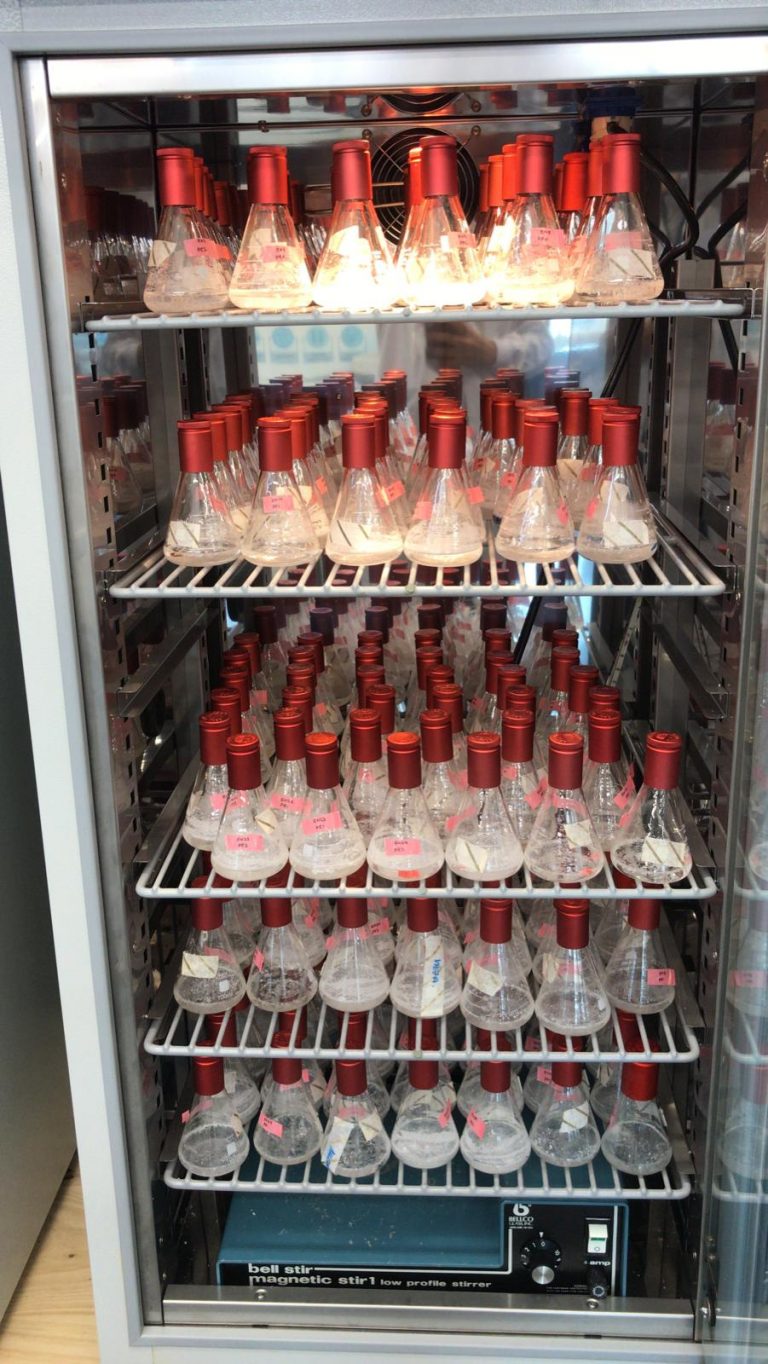Author: Kristie Tanner, Darwin Bioprospecting Excellence S.L.
Microorganisms can be found practically anywhere on our planet. From arid deserts, to hydrothermal vents or in environments contaminated with nuclear waste, microorganisms are able to adapt to almost any environment. Why? Because, over millions of years, they have developed methods to survive under a range of environmental stresses (i.e. draught, radiation, limited nutrient availability, high salinity, or high/low temperatures). Some of these survival methods include capsule or biofilm formation, efficient DNA-repair mechanisms, or pigment production, among many others.
Survival, especially in environments with low nutrient concentrations or contaminated environments, also requires adaptation to be able to eat whatever is available and degrade anything that may be toxic. This is very interesting to keep in mind when looking for microorganisms able to perform a certain activity: if you are looking for bacteria that are able to degrade caffeine, what better place to look than in the coffee waste reservoir of a Nespresso machine; if you want resin-degrading bacteria, check out the resin-tolerant microorganisms that inhabit pine trees; or if you want thermostable enzymes, don’t forget to check out the microbial communities living in hydrothermal vents.
The isolation and characterization of environmental microorganisms for their application in industry is known as microbial bioprospecting. As we have just seen, unusual environments can be very interesting for bioprospecting studies, as many of these environments remain unexplored and they harbor microorganisms that can be adapted to several stresses.
In recent years, a large number of bioprospecting studies have focused on one of the major environmental issues that we are currently facing: the accumulation of non-recyclable plastic fractions in the environments. More than 27.1 million tons of plastic waste were produced in the European Union in 2017, and plastic production is expected to double in the next 20 years. In the EU, only 31.1 % of the plastic waste generated in 2017 was recycled; the rest was either incinerated (41.6 %), or landfilled (27.3 %). Nevertheless, plastic recycling rates are of only 9 % in the United States, and close to zero in most of the developing world.
One option to tackle this challenge is to search for new microorganisms and/or microbial enzymes that are able to break down these polymers. In the ENZYCLE project, one of the plastic fractions that we are tackling are polyols, in particular, the recalcitrant polyolefins polyethylene (PE) and polypropylene (PP).
PE is a lightweight durable thermoplastic, and it is the most commonly used plastic. It is mainly used for packaging (i.e. plastic bags or films, containers, bottles, etc.), but it is also used to produce other elements such as tubes or automobile fuel tanks. PP is one of the top three most widely used polymers and it has the lowest density among what are known as ‘commodity’ plastics (these are produced in high volumes for applications where special material properties are not needed). It is used for the production of both flexible and rigid packaging, as well as for consumer goods (i.e. toys or luggage), automobile parts, fabrics (i.e. rope and twine), and medical applications.
Previous studies have described several bacterial genera able to degrade PE and PP (i.e. Pseudomonas, Bacillus, and Arthrobacter, among others), and these have been isolated from environments such as soil, seawater, landfills or plastic dumping sites. So, what makes ENZYCLE different from these previous studies? Aside from sampling a large range of environments, we will be using an adaptive evolution strategy to select not individual bacteria but rather microbial consortia with PE- and PP-degrading activities, and we will be combining these culture-dependent techniques with multiple –omic analyses (metagenomics, transcriptomics, metataxonomics) to get a holistic view of the key players and their strategies for plastic biodegradation.
Stay tuned in the upcoming months to find out more about our results in this project!
References
Bardají, D.K.R., Moretto, J.A.S., Furlan, J.P.R. et al. A mini-review: current advances in polyethylene biodegradation. World J Microbiol Biotechnol 36, 32 (2020). https://doi.org/10.1007/s11274-020-2808-5
Chien, A., Edgar, D. B., and Trela, J. M. (1976). Deoxyribonucleic acid polymerase from the extreme thermophile Thermus aquaticus. Journal of bacteriology 127(3), 1550–1557. https://doi.org/10.1128/JB.127.3.1550-1557.1976
Ghatge, S., Yang, Y., Ahn, JH. et al. (2020) Biodegradation of polyethylene: a brief review. Appl Biol Chem 63, 27. https://doi.org/10.1186/s13765-020-00511-3
Jung, KW., Lim, S. & Bahn, YS. (2017). Microbial radiation-resistance mechanisms. J Microbiol. 55, 499–507. https://doi.org/10.1007/s12275-017-7242-5
PlasticsEurope. Plastics – the Facts 2018. Web: https://www.plasticseurope.org/application/files/6315/4510/9658/Plastics_the_facts_2018_AF_web.pdf
Raddadi, N., and Fava, F. (2019). Biodegradation of oil-based plastics in the environment: Existing knowledge and needs of research and innovation. Science of the Total Environment 679, 148-158.
Tanner, K., Vilanova, C., and Porcar, M. (2017). Bioprospecting challenges in unusual environments. Microbial biotechnology 10(4), 671–673. https://doi.org/10.1111/1751-7915.12723
The New Plastics Economy. Rethinking the future of plastics: http://www3.weforum.org/docs/WEF_The_New_Plastics_Economy.pdf
Vilanova, C., Iglesias, A. and Porcar, M. (2015). The coffee-machine bacteriome: biodiversity and colonisation of the wasted coffee tray leach. Sci Rep 5, 17163. https://doi.org/10.1038/srep17163
Vilanova, C., Marín, M., Baixeras, J., Latorre, A., and Porcar, M. (2014). Selecting microbial strains from pine tree resin: biotechnological applications from a terpene world. PloS one 9(6), e100740. https://doi.org/10.1371/journal.pone.0100740
Wierckx N. et al. (2018) Plastic Biodegradation: Challenges and Opportunities. In: Steffan R. (eds) Consequences of Microbial Interactions with Hydrocarbons, Oils, and Lipids: Biodegradation and Bioremediation. Handbook of Hydrocarbon and Lipid Microbiology. Springer, Cham. https://doi.org/10.1007/978-3-319-44535-9_23-1




